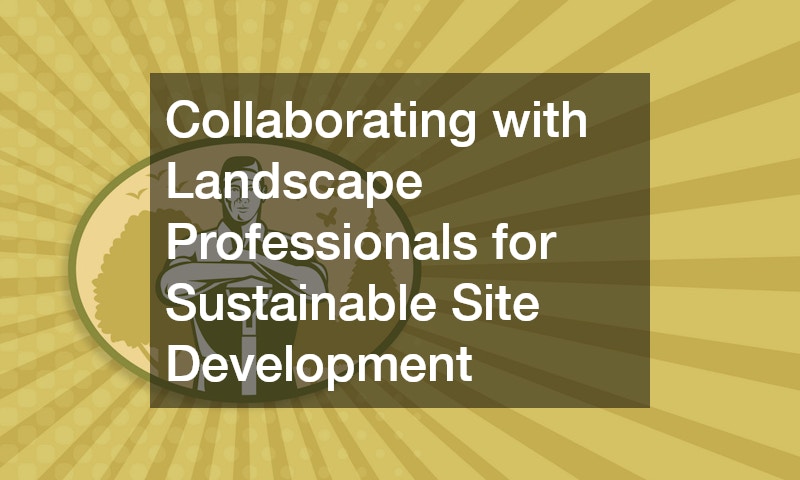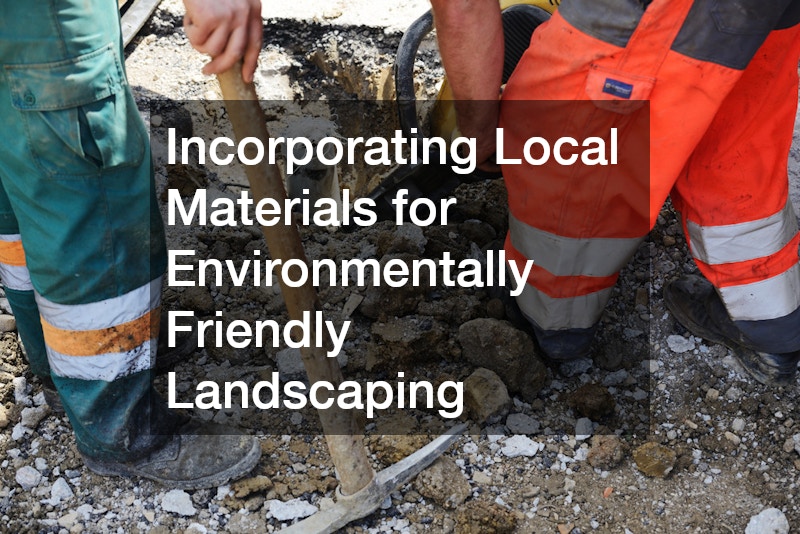Land clearing and grading are essential processes in site development, transforming raw spaces into usable land. While these activities are necessary, they can significantly impact local ecosystems if not managed responsibly. This article explores how to harmonize these activities with nature through sustainable practices that support wildlife and maintain environmental balance.
Effective Lot Clearing Methods That Support Local Wildlife Habitats

Lot clearing should be conducted with precision and care, ensuring minimal disruption to existing wildlife habitats. By collaborating with a responsible land clearing company, you can develop strategies that preserve crucial natural areas. Implementation of selective clearing not only protects wildlife but also maintains the native species essential for a thriving ecosystem.
Selective lot clearing helps maintain the ecosystem by retaining significant vegetation and providing refuge for local fauna. This approach contrasts with conventional methods, where all trees and shrubs are removed indiscriminately. Thoughtful lot clearing can significantly benefit biodiversity by protecting the habitats of endangered species.
Preserving wildlife corridors during land clearing supports the movement of animals between habitats. Establishing buffer zones around water bodies during these projects can protect aquatic ecosystems. Engaging with landscape architects can ensure that these considerations are integrated into the design phase of development projects.
Collaborating with Landscape Professionals for Sustainable Site Development

Landscape architects play a critical role in integrating ecological considerations into land clearing and grading projects. By working closely with these professionals, developers can create site plans that balance construction needs with environmental sustainability. Their expertise allows for innovative solutions that protect natural resources and mitigate impacts on local ecosystems.
Incorporating sustainable landscaping into the early design phases ensures that development projects meet both human needs and ecological requirements. Landscape architects can identify areas where minimal intervention is best, preserving existing ecological systems while using efficient lot clearing techniques elsewhere. This approach is a win-win for developers and the environment alike.
Through their expertise, landscape architects can recommend suitable technologies and materials that complement sustainable development goals. Implementing green infrastructure, for example, can manage stormwater naturally, reducing the need for extensive drainage systems. This collaboration translates into long-term environmental benefits and contributes to the sustainability of urban development projects.
Why Proper Yard Drainage Matters in Maintaining Ecosystem Balance
Effective yard drainage is vital in maintaining ecosystem balance during and after land clearing and grading activities. Poor drainage can lead to soil erosion, which not only damages landscapes but also harms waterways by transporting sediments. Consulting a yard draining expert ensures systems that mitigate these impacts are designed and implemented.
Well-planned yard drainage systems help control water flow and prevent undue harm to the surrounding environment. Improved drainage prevents stagnant water, which can harm local plant species and disrupt wildlife. Additionally, it reduces the risk of flooding, which can impact both the environment and residential areas.
Integrating natural materials like limestone from reputable limestone suppliers into drainage systems can enhance their efficiency. These materials help filter and control water runoff, ensuring a steady flow that nourishes instead of harms. A sustainable drainage strategy not only supports ecosystem balance but also prolongs the health of a landscape.
Incorporating Local Materials for Environmentally Friendly Landscaping

Using local materials in land clearing and grading minimizes the ecological footprint of development projects. Sourcing from local limestone suppliers, for instance, reduces transportation emissions and supports the regional economy. It’s an opportunity to celebrate and integrate the natural landscape into new developments.
Local materials often exhibit characteristics that harmonize with the surrounding environment, making them ideal for eco-conscious landscaping. By using these resources, project developers can create landscapes that are more resilient to climate variations and less dependent on artificial maintenance. This promotes a symbiotic relationship between built spaces and natural landscapes.
The use of local materials enhances aesthetic value by blending new developments with existing natural features. Incorporating region-specific plants, rocks, and soils creates a seamless transition from untouched nature to human-modified environments. This strategy ties the development project to its broader ecological context, reinforcing local identity and sense of place.
How Thoughtful Tree Management Supports Native Ecosystems

Tree management is a crucial component of sustainable land clearing and grading practices. Trees provide habitats, food, and protection for numerous species, forming essential parts of local ecosystems. Partnering with tree services can ensure proper tree management, preserving these critical resources.
Prioritizing the health and maintenance of native trees during development projects supports biodiversity. Preserved and properly managed trees enhance landscape aesthetics and contribute to carbon sequestration. By engaging tree services, developers can implement pruning, planting, and pest management practices that support long-term ecological health.
Thoughtful tree management involves assessing which trees should remain as part of the new landscape. This requires balancing aesthetic goals with ecological needs, where tree conservation directly contributes to ecosystem services. Awareness and proactive management help improve air quality, stabilize soil, and offer shade in developing areas.
Strategies for Responsible Stump Removal That Benefit the Landscape
Stump removal is a critical yet often overlooked aspect of land clearing projects. Removing stumps can improve land usability, but it’s essential to conduct this process responsibly. Collaborating with experts in stump removal ensures safety and minimizes disruption to the ecosystem.
Traditionally, stumps are removed to make way for development; however, strategic retention of some stumps can provide habitat benefits for various wildlife. Not all stumps should be removed, as they can offer shelter and food for insects, fungi, and small mammals. Thoughtful planning allows for balance between usability and ecological benefit.
When stump removal is necessary, opting for eco-friendly methods like grinding over chemical treatments preserves soil health. This reduces the risk of contaminating the surrounding soil and water bodies. Working closely with a land clearing company ensures that stump removal is done in a manner that aligns with environmental best practices.
The Benefits of Mulching: Protecting Soil and Supporting Native Species
Mulching plays an integral role in maintaining healthy landscapes after land clearing and grading. By covering soil with organic material, mulching protects against erosion, preserves moisture, and supports native plant growth. It’s a simple yet powerful tool for promoting ecological resilience.
Mulching helps conserve soil moisture, reducing the need for irrigation and supporting drought-resilient landscapes. This practice maintains soil structure, providing a conducive environment for the growth of native plants. The decomposition of mulch materials also adds nutrients to the soil, further enhancing the growing conditions.
Applying mulch serves as a natural weed barrier, minimizing competition for resources and allowing native species to thrive. Using locally sourced mulch supports the ecological balance by reintroducing organic material into the ecosystem. Mulching is thus fundamental to developing landscapes that are sustainable and supportive of local biodiversity.
Choosing an Eco-Conscious Approach with Your Land Clearing Team
Developing an eco-conscious approach to land clearing and grading begins with selecting the right team. Choosing a land clearing company that prioritizes sustainability ensures that environmental considerations are at the forefront of project planning. Discussing goals and expectations with your team is key to successful green development.
Eco-conscious teams use practices such as selective clearing, wildlife preservation, and sustainable waste management. These companies often employ strategies that minimize disturbance to land and habitats. This proactive approach reduces the environmental footprint of construction projects.
Communication is vital; clearly articulating your sustainability priorities to your land clearing team helps align goals. Regular collaboration and updates ensure that your project stays true to its eco-conscious objectives. Partnering with a team that understands the nuances of eco-friendly development can contribute significantly to protecting local ecosystems.
Maintaining Clean Sites: The Importance of Responsible Waste Management
Responsible waste management is crucial during land clearing and grading projects. It not only prevents environmental degradation but also contributes to clean and safe worksites. Implementing comprehensive trash removals and utilizing dumpster rentals can efficiently manage waste throughout the development process.
Neglecting waste management can lead to pollution and disrupt local wildlife. By employing sustainable waste practices, developers minimize their impact on the environment. Proper planning and coordination with waste disposal services also ensure compliance with environmental regulations and standards.
Using biodegradable or recyclable materials and ensuring their proper disposal helps reduce landfill contributions. Developers can partner with trash removal companies for trash removals that focus on sustainability, promoting a circular economy. This practice supports environmental health while ensuring efficient site operations.
Efficient Solutions for Managing Debris During Land Clearing Projects
Debris management is a challenging yet vital component of successful land clearing and grading. Efficient debris management maximizes resource use and minimizes waste, contributing to a project’s overall sustainability. Effective planning and partnerships with land clearing companies facilitate this process.
Initial site assessments help create strategic debris management plans, minimizing the amount of waste generated. Techniques such as “cut and fill” reduce the need for excessive waste removal by using cleared materials to grade and level the site. This approach promotes resource efficiency and reduces environmental impact.
Collaborating with professionals skilled in sustainable debris management promotes eco-friendly practices. Employing on-site recycling methods, such as chipping wood debris for mulch, provides additional environmental benefits. Utilizing partnerships with local waste management services ensures efficient and responsible disposal of non-recyclable materials.
Implementing Soil Health Practices During Land Grading and Clearing
Maintaining soil health is essential throughout the grading and clearing process for any development. Implementing practices to preserve soil structure and fertility supports robust ecosystems and sustainable landscapes. By prioritizing soil health, developers can create foundations that benefit both human and wildlife communities.
Soil conservation techniques include minimizing disturbance, using cover crops, and incorporating organic amendments. These methods promote microbial activity and nutrient cycling, critical for healthy soil ecosystems. Sustainable soil management enhances root growth, improves water retention, and reduces erosion.
Working with land clearing professionals to implement soil health practices can lead to better overall project outcomes. Regular assessments and adjustments ensure that soil stays healthy and can recover quickly from any unavoidable disruptions. Long-term soil health contributes to project sustainability and the success of re-vegetation efforts.
Creating Natural Pathways: Thoughtful Land Use for Wildlife
Creating natural pathways is an innovative way to support wildlife during land clearing and grading projects. These pathways facilitate animal movement, promoting connectivity between habitats fragmented by development. Thoughtful design can integrate pathways seamlessly into the landscape, benefiting both construction objectives and ecological needs.
Identifying and preserving corridors during the planning phase ensures that development does not isolate wildlife populations. By thoughtfully placing pathways, developers can maintain natural behaviors and interactions among species. These considerations help conserve biodiversity, making habitats more resilient and adaptable to change.
Engaging ecological experts in pathway creation helps ensure these designs are based on thorough scientific understanding. By combining ecological insights with landscape architecture, developers can create inclusive spaces that accommodate multiple species. This integration exemplifies a holistic approach to sustainable development.
Restoration Techniques to Reintroduce Native Plants After Clearing
Reintroducing native plants following land clearing and grading is crucial for restoring ecosystems and supporting biodiversity. Restoration techniques can revitalize disturbed areas and encourage the return of local wildlife. By prioritizing native species, developers can recreate habitats similar to those lost during development.
Selecting the right native plants requires expertise and understanding of local ecosystems. Re-vegetation plans should include species that are well-adapted to local climate conditions and require minimal maintenance. Utilizing regional seed banks and nurseries can support these efforts and ensure plant material is locally sourced.
Empowering communities to participate in restoration projects can foster stewardship and enhance project success. Educating stakeholders about the importance of native plants can also promote widespread use of these species in private landscapes. This collective effort aids in establishing resilient ecosystems that enhance environmental health and community well-being.
Land clearing and grading play pivotal roles in modern development but must be approached with ecological mindfulness. By using effective lot clearing methods, collaborating with landscape professionals, and maintaining soil health, developers can foster sustainable development. Implementing the strategies outlined ensures that site development projects contribute positively to ecological balance and biodiversity.
The commitment to eco-friendly practices benefits more than just the environment; it enhances project quality and community relations. Responsible land clearing supports not just current construction needs, but sets a precedence for future sustainable developments. This approach underscores the importance of thoughtfully integrating human activity with natural ecosystems for durability and prosperity.
By choosing an eco-conscious approach, involving local resources, and partnering with knowledgeable teams, land clearing and grading projects can leave lasting positive impacts. As stewards of the land, it’s vital to build sustainable communities that respect the intricate balance of our natural world.
